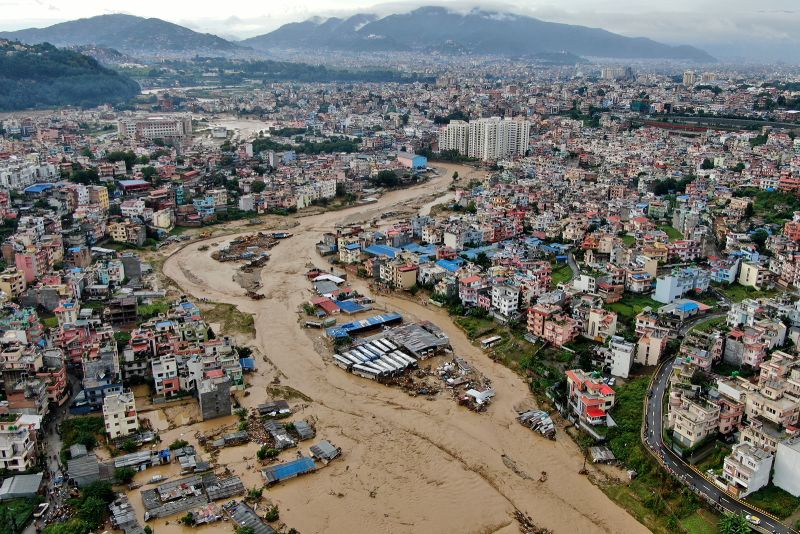Days of heavy monsoon rains in Nepal have triggered widespread flooding and landslides across the Himalayan nation, killing almost 200 people and causing widespread destruction.
Images from the capital show much of southern Kathmandu and nearby cities underwater or buried in thick mud as incessant torrential rains caused major rivers to swell far above danger levels.
The floods and landslides have destroyed hundreds of homes, cut off highways, and downed power lines, which hit just months after the country experienced deadly record rainfall and flash flooding that scientists say has intensified as a result of the climate crisis.
Search and rescue teams have struggled to reach residents buried under their homes or trapped by flooding in remote areas.
In hard-hit Lalitpur, south of Kathmandu, images showed the Nepal Armed Police Force using zip lines to traverse a flooded river, while elsewhere rescue teams could be seen digging with their bare hands to free residents buried under mud and rubble, or using boats and helicopters to reach people stranded on rooftops.
More than 3,700 people have been rescued, police said, but authorities believe the death toll will rise as rescue teams reach more remote and cut off areas.
Floods and damage from landslides have also affected much of the central and eastern parts of the country.
The bodies of 16 people were recovered Sunday from two buses that had been traveling along a key road out of Kathmandu when they were hit by a huge landslide, according to Reuters. One image showed a tourist bus partially submerged in mud with its windshield smashed in.
Video posted by Nepal Police shows the moment a two-year-old boy was rescued from his collapsed house in Bhimeshwor, Dolakha district, following a landslide. According to police, the boy’s parents and brother died.
Parts of the capital reported rain up to 322.2 millimeters (12.7 inches), pushing the level of its main Bagmati river up 2.2 meters (7 feet) past the danger mark, Reuters reported.
Further west of the capital, one international student described how “water was rushing through the streets in Pokhara,” the country’s second most populous city and a popular tourist destination known as a gateway for trekking in the Himalayas.
On Sunday, rains had eased in several areas allowing a major clean-up operation to begin. However, Kathmandu remained cut off with three highways into the city blocked by landslides, Associated Press reported. Schools have also closed for three days, according to Reuters.
Nepal is no stranger to heavy annual monsoon rains, but experts say this year was particularly bad.
“I’ve never before seen flooding on this scale in Kathmandu,” said Arun Bhakta Shrestha, the environmental risks expert at the International Centre for Integrated Mountain Development (ICIMOD), in a statement.
Experts there said in a statement the impacts of the weekend’s extreme rainfall in Nepal have been exacerbated by rampant development and urbanization, including unplanned construction on floodplains and poor drainage.
They have called on the government and city planners to increase funding for underground stormwater and sewage systems and the restoration of wetlands to help cities absorb more water.
South Asia is home to about a quarter of the world’s population and is among the most vulnerable to the impacts of the human-caused climate crisis and its intensification of extreme weather. Recent studies have shown that Asia will only become more vulnerable to extreme rain and flooding by 2030.

